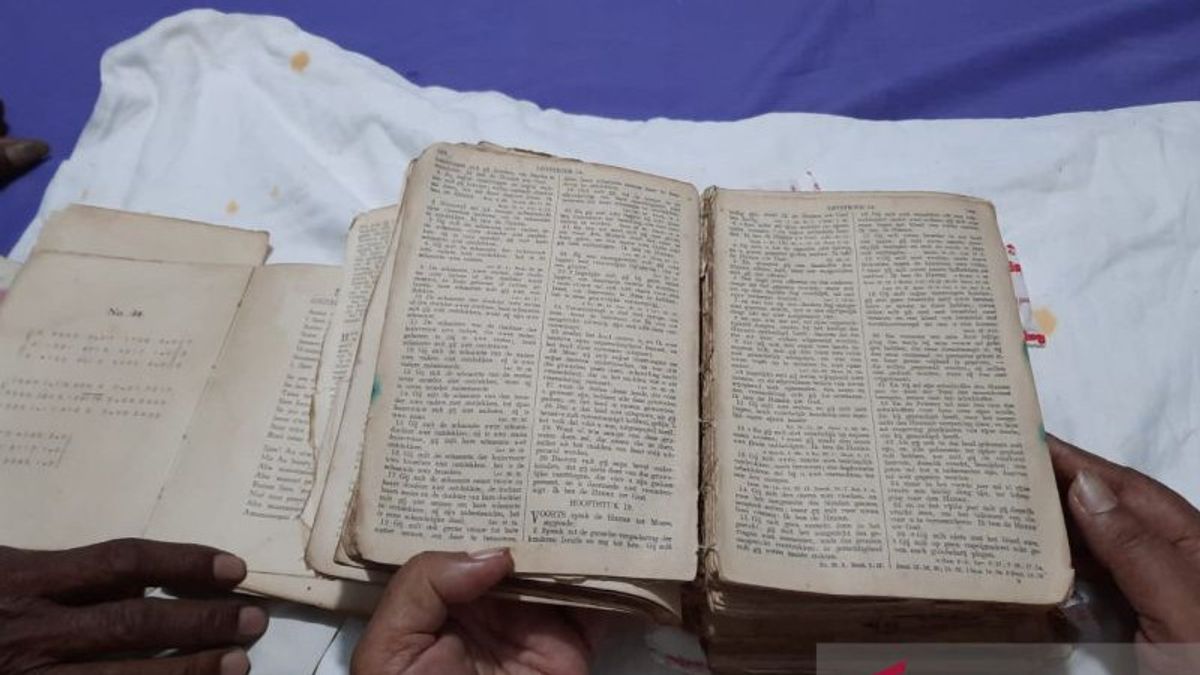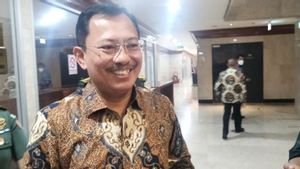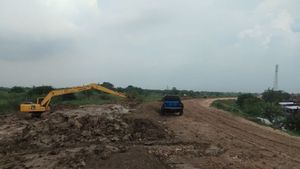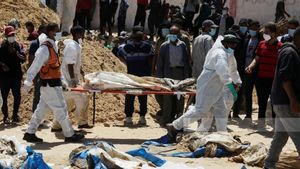
PAPUA - Teluk Wondama Regency, West Papua Province is one of the centers for the spread of Christianity in Papua. Many places in Wondama store relics that are evidence of the history of preaching or preaching the Gospel in Papua, hundreds of years ago.
Call it Aitumeiri Hill in Miei, Wasior which is famous for its stone civilization site because it was the first place where indigenous Papuans got to know formal education. Also Yende on Roon Island with a legacy of an old church and Bible.
On Roon Island itself, Yende is not the only one that is full of stories of ancient evangelism. Syabes, a small village located approximately three kilometers from Yende, also has many traces of Christianity in the past that are not widely known.
The beginning of the Syabes people knowing Christianity began with the presence of the Reverend Rudolf Beyer, a missionary from Europe, on May 6, 1866.
Beyer was sent from Mansinam, Manokwari to spread the gospel to the Roon people, who at that time were still living in a pagan tradition or did not know God. A year later, in February 1867, Beyer decided to settle in Syabes.
He brought along his wife, Anna Cambier. Beyer's main mission, namely to proclaim the Gospel for the people of Shabes, was not easy. He received great challenges and rejection from local residents who were still primitive.
Various tactics were carried out to be able to expel Beyer from Roon Island which at that time was known as the "Island of the Devil's Throne". Finally, his wife, Anna Cambier, became a victim. Anna Cambier died on June 3, 1868.
It is said that Anna Cambier was poisoned by Rokowery, a warlord in Syabes who strongly opposed the proclamation of the Gospel. Anna Cambier is buried in Syabes. Her tomb is on Mount Bindani.
"But maybe many people don't know. People know better about Yende," said Bernadus Nehemia Rumadas, a member of the GKI Rudolf Beyer Congregational Council in Syabes Village, after celebrating the 156th anniversary of the Gospel in Syabes, recently.
Nehemia recounted that Bindani Hill, which is located right at the top of Syabes Village, used to be the residence of Rudolf Beyer and his wife.
At that location, you can still see a mound of earth and rocks which is believed to be Beyer's former home. In that place, there are also other supporting buildings.
In addition to Beyer's house and the tomb of Anna Combier, in Bukit Bindani there is also the tomb of a Bible teacher from Maluku named Dominggus Rissapary.
Rissapary was sent to Syabes 41 years after Rudolf Beyer's departure. Beyer left Syabes with deep disappointment after the death of his wife.
"Teacher Rissapary is the one who taught the Syabes people the art of the flute tambourine so that now the Wondama people can know how to play the flute tambourine," explained Nehemia.

Neglected
Despite being part of the history of evangelism in Papua in the past, the tombs of Anna Combier and also Dominggus Rissapary seem neglected.
The tomb of Anna Combier itself has indeed been restored to be a cement grave, but it seems that it is just being done. The roof is also only perfunctory. There is also no tombstone or nameplate as an indication that it is the tomb of the wife of a past evangelist.
"This is what the Tourism Office made first," said Nehemia as quoted by Antara, Tuesday, June 21.
Meanwhile, the tomb of the Gospel teacher Rissapary was only renovated some time ago ahead of the 156th anniversary of evangelism in Syabes. In a period of so many years, the grave of an important historical figure in the evangelism in the Land of Papua has barely been touched by any repairs.
"The congregation here who worked together to build Guru Rissapary's grave. Because if it wasn't made like this (cemented, ed.), it might be lost," said Nehemia.
Residents hope that the Teluk Wondama Regency Government will pay special attention to the graves of Anna Combier and Guru Rissapary, as well as Rudolf Beyer's former house as well as the relics of ancient missionaries in Syabes Village.
“On behalf of the Rudolf Beyer Syabes Congregational Council, I ask the Wondama Regency Government to restore these sites to become church historical assets in Teluk Wondama Regency. These are all historical sites but buried to this day, no one knows because they have not been taken care of," he said.
Old Bible
Traces of Christianity in Syabes are not only the graves of Rudolf Beyer's wife and Bible teacher Dominggus Rissapary. Shabes also keeps an old Bible which is estimated to be more than 200 years old.
The foreign-language Bible - presumably Dutch or German - was found in the former home of Pastor Rudolf Beyer. Currently, the old Bible has been handed over to the inventory of the GKI Rudolf Beyer congregation.
“This Bible is older than the Bible in Yende because it is still written in European languages. In Yende, Indonesian and other languages are already used,” explained Eduard Yohan Manaw, Head of the GKI Rudolf Beyer Syabes Congregation.
He explained that the old Bible was first discovered by one of the residents when cleaning Beyer's former house. Furthermore, the Bible was handed over to the head of the local church congregation from generation to generation to the present generation.
"In 2006 I moved here and then they handed it over to me as the head of the church. I took it and handed it over to the congregation's inventory," he said.
SEE ALSO:
The old Bible was kept as an inheritance from the zendelings. Currently, the old Bible is stored in a special room in the Rudolf Beyer Congregational Church in Syabes Village.
Even that holy book could only be issued at an important moment, given its very old condition.
The English, Chinese, Japanese, Arabic, and French versions are automatically generated by the AI. So there may still be inaccuracies in translating, please always see Indonesian as our main language. (system supported by DigitalSiber.id)













